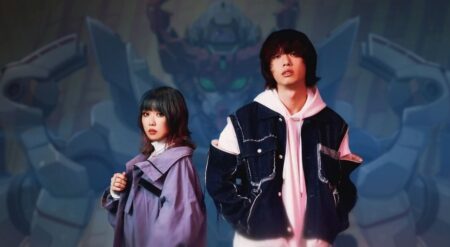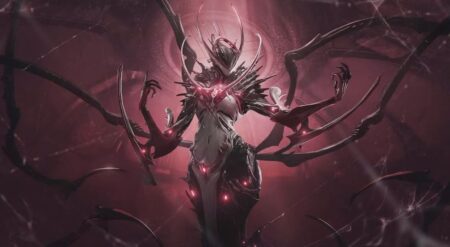PLUTO is a masterpiece. Co-created by Naoki Urasawa (20th Century Boys, Yawara!, Master Keaton) and his long-time co-creator Takashi Nagasaki, the manga is based on Osamu Tezuka’s Astro Boy ‘The Greatest Robot on Earth’ arc from 1964. High drama and deep sci-fi, the series takes place in a neo-futuristic world where humans and high-functioning robots live in complete harmony. Now, PLUTO has become an anime from Studio M2. We got the chance to talk with Masao Maruyama, Producer of the series and founder and President of Studio M2 at the Anime Expo.
In the original manga, there is a balance in tone and genre so superbly captured that it is easily a mammoth undertaking. And with that, Masao Maruyama and his team had to make a choice, adapt through change or adapt through a faithful dedication to the manga. Maruyama and his team at Studio M2 chose the latter for the PLUTO anime.
Maruyama explains, “We created what Urasawa-San has created in the manga. Often in animation, you think that you can have a different deployment for the story but we decided to be faithful to the original story. But when you work in animation, staying faithful to the original source material, we hesitate to do that. We first initially thought that we wanted to do it in our own way. Maybe tweak things a little bit, change some elements, or cut some pieces. We were working and playing with the story to see what we could do. But after around two years of planning, we decided that it makes it more difficult to [change things]. Then, we decided to keep the original story, and we had a determination to be faithful to the original.”
Still, being faithful for the PLUTO anime adaptation comes with its own complication. There is pressure, but there is also the ability to bring to life single-frame scenes into a moving work of art. But in PLUTO, the animators also had to balance the human with the sci-fi, the future with the present, and keep everything centered. Maruyama added, “Because we are working on animation, things are moving. We’re working on landscapes and scenery, and then there is a sense of ambiance that we are trying to animate too. It is sci-fi, but we had talks about how much reality we wanted to portray in the series. We have this futuristic city, but we wanted to make sure that people feel that it’s believable. We wanted to create this convincing world, and it was a challenge but we tried. We worked really hard on it and we ultimately came to a point where this was [PLUTO].”
It’s clear that the PLUTO anime adaptation is a labor of love and one entered with reverence for the work of Naoki Urasawa and Takashi Nagasaki. That respect also translates to the choice to take advantage of Netflix as a platform and go beyond the traditional 30-minute episode length. At eight episodes and one hour a piece, this is a substantial change to how viewers usually watch animated series. While some series like Oshi No Ko and Ōoku: The Inner Chambers are two recent examples of a long opening episode, it is not the norm across the remainder of the season.

This choice isn’t happenstance but deliberate in order to keep the story intact, naturally breaking between episodes in the same way a reader would with the original manga. Maruyama explained, “Usually, in [animated television] we only have 30-minute episodes. But we wanted to give an experience where, in one episode, you go through the entire experience as intended. We didn’t want to cut them into pieces. For TV, it’s 30-minute episodes, but because we knew we were working and collaborating with Netflix, we were able to have 60-minute episodes, one hour per episode, and we were able to have a lot of things – like money. But because of this collaboration [with Netflix], we were also able to really raise our bar when working on this project.”
The one element these longer episodes directly brush up against is keeping the viewer engaged, and it was a thought at the front of the minds of Maruyma and his team. He explained, “Talking about eight episodes at an hour each, it’s not only tough and time-consuming for the production side, the creators who are working on these episodes, it’s for the viewers too. It will drain their energy too because [the peisodes] are long but we wanted to make sure that we don’t bore the people who are spending long hours watching [PLUTO]…We wanted to keep entertaining them and just like when you’re reading a manga or watching a movie, sometimes you get tired but you always have something make you want to keep watching. So I feel that it’s the same thing for both the creators, authors, and viewers or the readers. And once you complete it, you become so satisfied that you feel a sense of joy that is very rewarding.”
Masao Maruyama is a prolific figure in Japanese animation, an anime entrepreneur, and a producer, and he is the co-founder of Madhouse, as well as the founder of MAPPA and Studio M2. He’s known for series works such as DEATH NOTE, Hajime no Ippo, Chihayahuru, and films such as The Girl Who Leapt Through Time, Summer Wars, Paprika, and more. And with such a storied history in animation since 1965, Maruyama said that the most intimidating part of adapting PLUTO into an anime was his age.
“My biggest intimidation was my age. I was wondering if I would have enough strength and physical energy to complete it. If I was young, I wouldn’t have to worry about those things, but why I started planning [PLUTO], I was over 70. So I was worried if I would be able to complete this whole process and if I would still be alive. But then I was able to complete and I’m still alive, so I’m very happy about that. And maybe if I think about it another way, if I didn’t have this project, I would have been gone. Over the past few years, my desire to complete the show became my reason to live. It gave me the energy to move forward,” Maruyama said.
PLUTO is streaming exclusively on Netflix.







